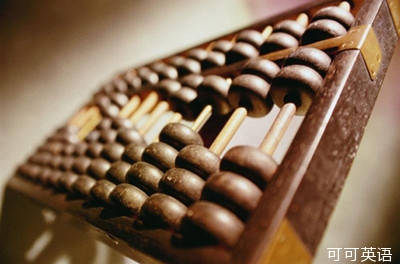【背景】
聯(lián)合國(guó)教科文組織保護(hù)非物質(zhì)文化遺產(chǎn)政府間委員會(huì)第八次會(huì)議4日在阿塞拜疆巴庫(kù)通過(guò)決議,正式將中國(guó)珠算項(xiàng)目列入教科文組織人類非物質(zhì)文化遺產(chǎn)名錄。
【新聞】
請(qǐng)看《中國(guó)日?qǐng)?bào)》的報(bào)道:
The Zhusuan, otherwise known as the Chinese abacus was officially listed as an intangible cultural heritage at the 8th Annual UNESCO World Heritage Congress on December 4th in Baku, Azerbaijan.
12月4日,在阿塞拜疆首都巴庫(kù)舉行的聯(lián)合國(guó)教科文組織年度世界遺產(chǎn)大會(huì)第八次會(huì)議宣布,珠算正式被列為人類非物質(zhì)文化遺產(chǎn)。
【講解】
Chinese abacus就是珠算;intangible cultural heritage是非物質(zhì)文化遺產(chǎn)。
珠算是一種古老的計(jì)算方法(calculating method),早在中國(guó)古代的春秋時(shí)期(the Spring and Autumn Period)就發(fā)明了,迄今已有2500多年的歷史。被認(rèn)為是中國(guó)歷史上第五大發(fā)明(the fifth invention in Chinese history),2008年被列為國(guó)家級(jí)非物質(zhì)文化遺產(chǎn)(national-level intangible cultural heritage)。
隨著時(shí)間的推移(over the course of time),電子計(jì)算器(digital calculators)的出現(xiàn)使珠算和算盤(pán)逐漸淡出了歷史舞臺(tái)。在現(xiàn)代,算盤(pán)更多的是一種文化符號(hào)(cultural symbol),而不是作為實(shí)用計(jì)算工具(practical calculating tool)。
聯(lián)合國(guó)教科文組織認(rèn)為,非物質(zhì)文化遺產(chǎn)給擁有者群體帶來(lái)認(rèn)同感(bring a sense of identification to the people who own it)和歷史感,是確保文化多樣性與人類創(chuàng)造性(maintain cultural diversity and human creativity)的關(guān)鍵(essential)。
自2001年至今,中國(guó)入選聯(lián)合國(guó)教科文組織“非遺”項(xiàng)目總數(shù)已達(dá)37項(xiàng)(items),包括昆曲(Kunqu opera)、皮影戲(the shadow play)、針灸(acupuncture)等,成為世界上入選“非遺”項(xiàng)目最多的國(guó)家。
注:古中國(guó)的四大發(fā)明分別是指南針(compass)、火藥(gunpowder)、印刷術(shù)(printing)、造紙(paper making)。

可可原創(chuàng),未經(jīng)許可請(qǐng)勿轉(zhuǎn)載











